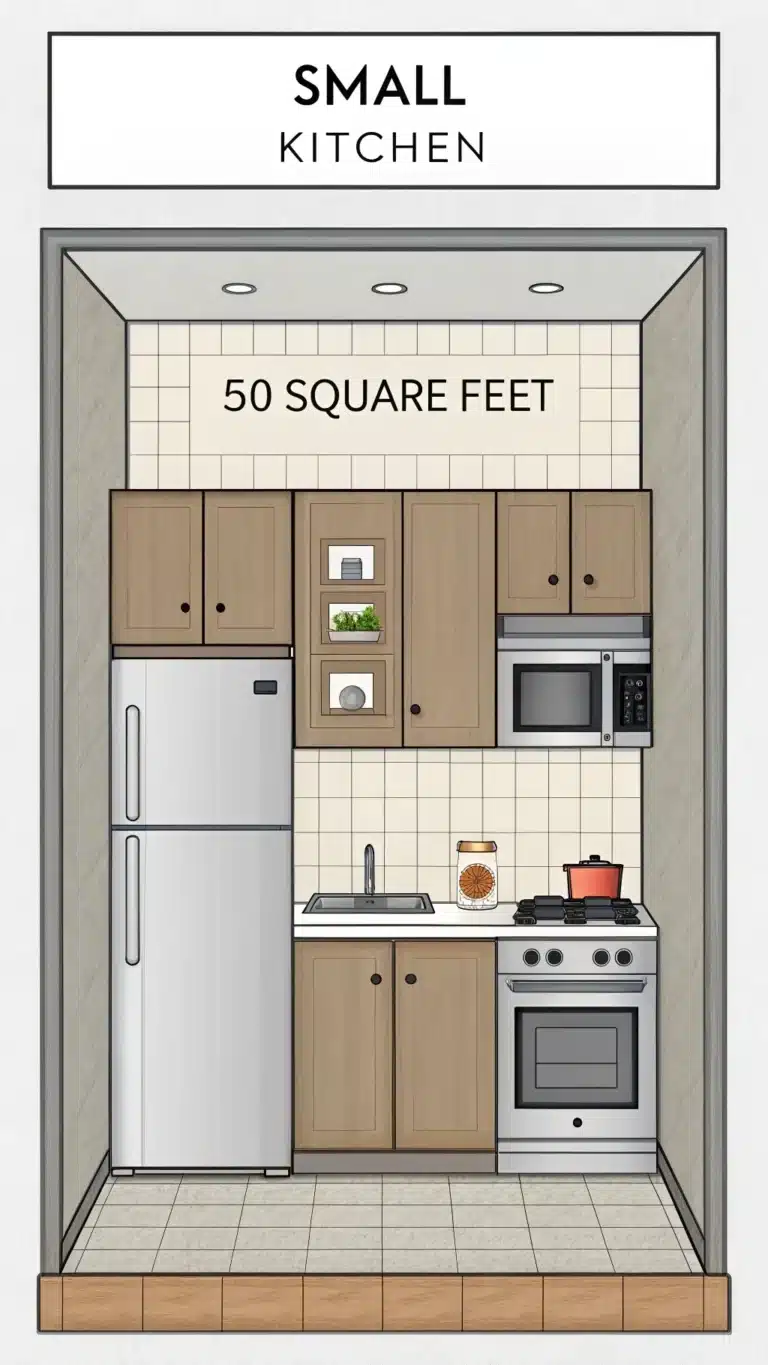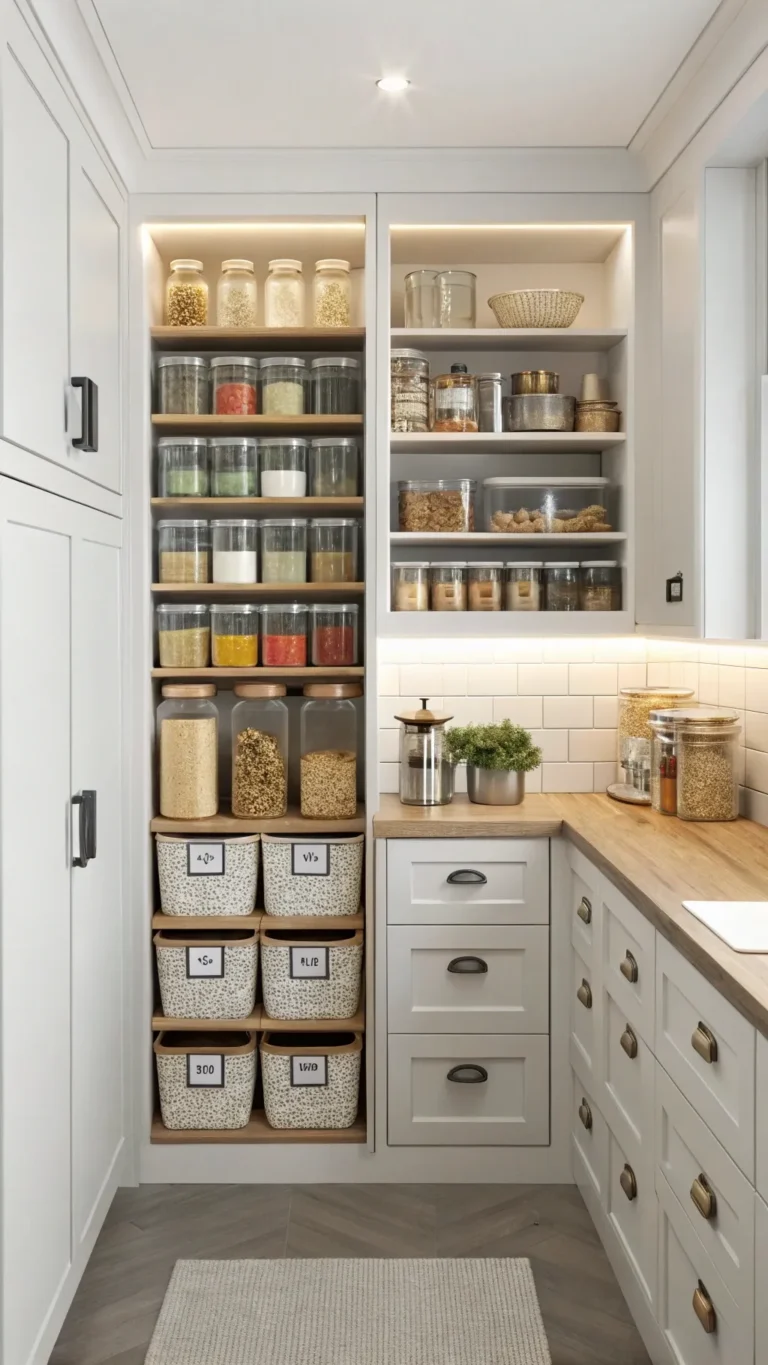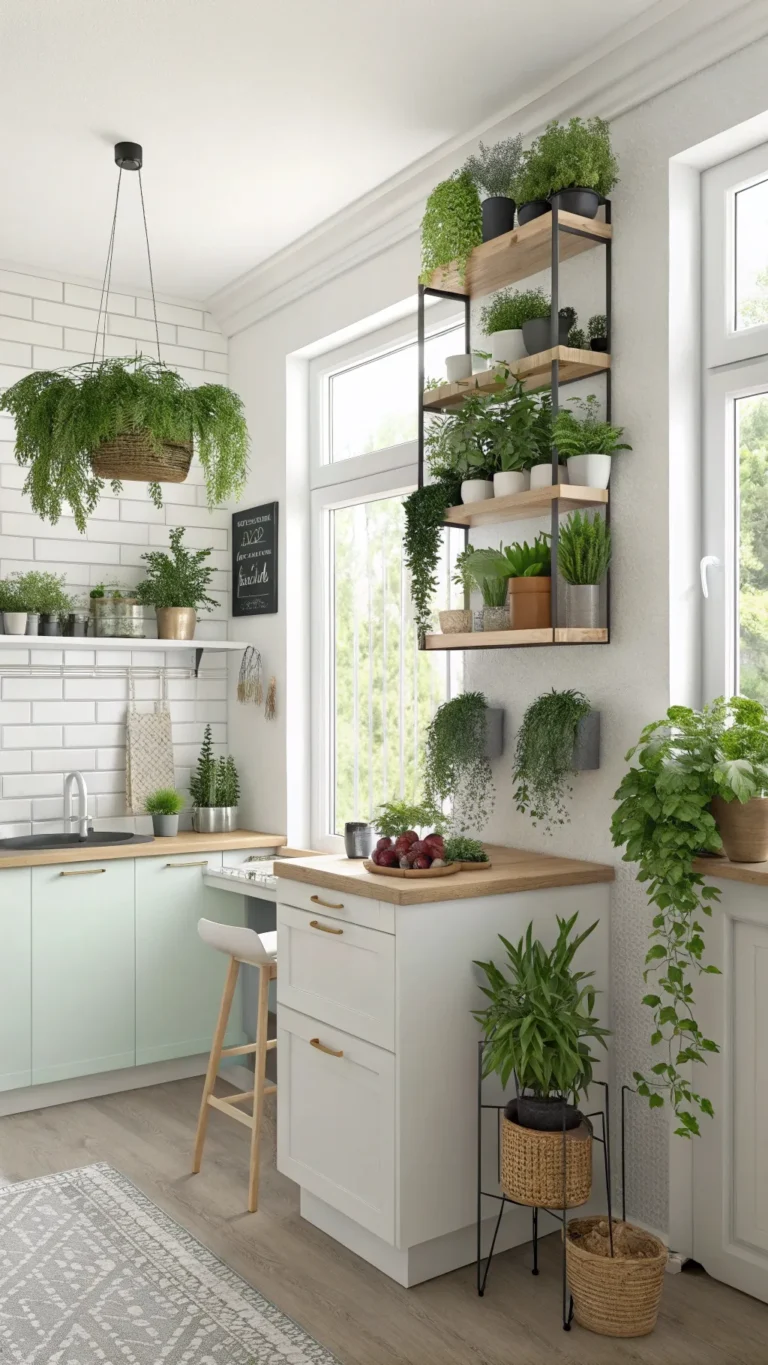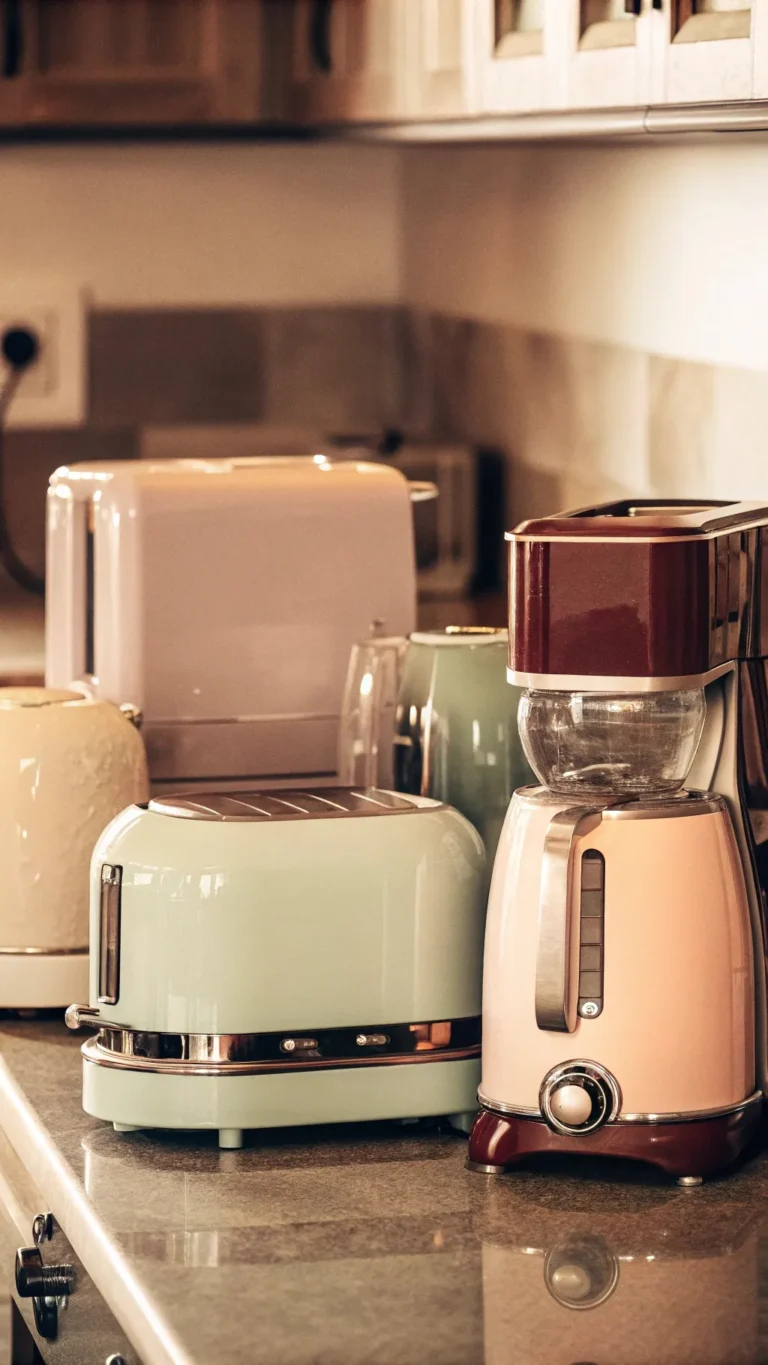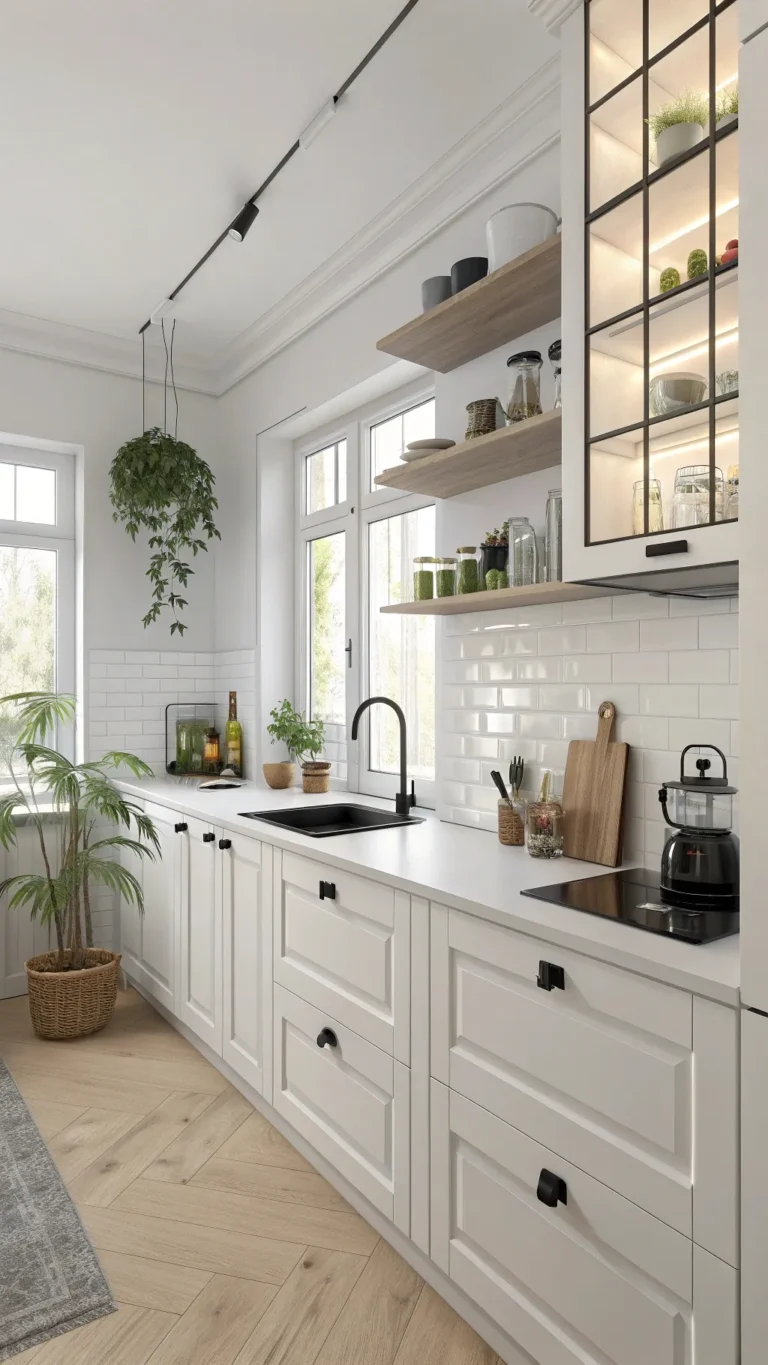1. Introduction
Small kitchens bring many joys—but also challenges. One common annoyance? Finding the perfect spot for your trash can. It often feels like trash bins take over valuable cabinet space. Or worse, you trip over them while cooking. No one wants a messy, cluttered kitchen.
This guide presents small kitchen trash solutions designed to save space and reduce clutter. Ideas include hidden bins, pull-outs, wall-mounted options, and odor control tricks. We cover ten smart ways to handle trash cleanly and efficiently. You will find inspiration to keep your kitchen tidy and your waste managed, even in the tiniest spaces.
Let’s explore solutions that help you free up precious square feet and keep odors away. Smart choices make small kitchens feel larger and more inviting.
2. Hidden & Built-In Solutions (Ideas 1-3)
The Power of Pull-Outs: Maximizing Base Cabinets
Pull-out trash cans slide out smoothly from your base cabinets. Models vary—single, double, side-mount, and bottom-mount options exist. These systems keep trash hidden but accessible. Imagine sliding a drawer and tossing waste away instantly.
Pull-outs offer cleanliness and style. They can hold trash and recycling in one spot. Downsides exist. They need dedicated cabinet space and careful installation. Measure your cabinets precisely. Ensure bin sizes match your waste needs.
Expert tip: “Selecting the right size pull-out bin saves frustration,” says kitchen designer Mary Collins.
Alt text suggestion: “Pull-out trash can system under kitchen counter”
Utilizing Under-Sink Space
Under sinks, space often goes unused or becomes cluttered with pipes. Use this corner cleverly with special bins and sliding racks. Door-mounted trash bins add extra room behind cabinet doors.
This setup fits small kitchens well. Plumbing limits bin size, so pick compact solutions. Good for compost waste or recyclables, under-sink bins keep counters clear.
Rule of thumb: Leave clearance for pipes and easy access to plumbing valves.
Alt text suggestion: “Under-sink trash and recycling bins in a compact kitchen”
Seamless Integration: Tilt-Out Cabinet Bins
Tilt-out bins hide perfectly behind cabinet fronts. They tilt open like a drawer but use less space. Stylish and neat, these bins suit those who value aesthetics.
Installing tilt-outs takes woodworking skills or remodeling plans. They may slow access speed. Still, tilt-outs blend into kitchens beautifully.
DIYers love this challenge. “A tilt-out cabinet makes the trash almost invisible,” notes home organization expert Nina Hernandez.
Alt text suggestion: “Tilt-out hidden trash can cabinet in a small kitchen”
3. Wall-Mounted & Door Solutions (Ideas 4-5)
Freeing Up Floors: Wall-Mounted Bins
Mounting trash cans on the wall frees floor space entirely. Options range from simple bins to folding ones that collapse when not in use.
Mount bins near prep stations, but avoid main walkways. Secure mounting prevents accidents. Some may dislike the look, but clear walls often feel bigger.
Tip: Use materials that match your kitchen style for a softer appearance.
Alt text suggestion: “Wall-mounted kitchen trash bin keeping floor clear”
Over-the-Door Convenience
Small bins that hang over cabinet doors sit inside or outside your cabinets. No drilling needed. You get quick access while peeling or chopping.
Capacity is limited, fitting compost or small scraps best. Watch for door interference and make sure doors fully close.
These bins suit cooks who generate small food waste amounts. Easily removed for cleaning.
Alt text suggestion: “Over-the-door bin attached to cabinet for compost scraps”
4. Freestanding & Space-Saving Bins (Ideas 6-7)
The Slim Profile Advantage
Slim trash cans are tall and narrow. They fit tight spots, like between the fridge and counters. These bins maximize vertical space with a small footprint.
Some risk tipping if unsteady. Non-slip bases and weight help. Measure narrow spaces before buying.
A recent survey by Home Living Mag found 65% of users preferred slim bins for tight kitchens.
Alt text suggestion: “Slim profile trash can fitting in a narrow kitchen space”
Strategic Placement of Compact Bins
Put small bins near coffee stations or cleaning cupboards. These bins capture specific waste types without clutter.
They require more frequent emptying but boost convenience. Select lids that control smells for kitchen zones handling food scraps.
Map kitchen waste zones to decide ideal spots for mini bins.
Alt text suggestion: “Small trash bin placed near coffee station in kitchen”
5. Managing Multiple Waste Streams (Ideas 8-9)
Double Duty: Integrated Trash and Recycling
Dual-compartment bins blend trash and recycling in one unit. Pull-out or freestanding options exist.
Splitting compartments reduces footprint but cuts bin capacity in half. Estimate your trash and recycling volume first.
Recycling must follow local rules. The EPA reports that well-designed bins increase recycling rates by 20%.
Alt text suggestion: “Dual-compartment trash and recycling bin for small kitchens”
Stacking Up: Vertical Recycling Solutions
Stackable bins use vertical space smartly. Different waste streams pair neatly.
The downside? You reach for top bins first, so plan contents wisely. Stacking stability matters, so look for lockable lids or side supports.
Vertical systems suit kitchens with limited floor space but vertical wall clearance.
Alt text suggestion: “Stackable recycling bins for small kitchen organization”
6. Odor Control & Maintenance (Idea 10)
Choosing Bins with Odor-Fighting Features
Trash cans with tight lids or touchless sensors limit smells and germs. Carbon filters absorb odors naturally.
Material choice matters; stainless steel resists stains and cleans easily.
Hospitals popularize touchless bins for hygiene – now common in modern kitchens.
Smart Bag Strategies
Use strong bin liners to prevent leaks. Scented bags can mask odors but may irritate allergies. Double bag wet food waste for extra protection.
Natural Odor Absorbers & DIY Tricks
Baking soda sprinkled at the bin bottom neutralizes smells. Activated charcoal filters help too. Vinegar rinse cleans bins after emptying.
The Importance of Regular Cleaning
Clean bins every week. Use warm water and mild soap. A clean bin feels fresher and lasts longer.
Janitorial expert Lisa Tran says, “Regular maintenance cuts down on odors significantly.”
Alt text suggestion: “Kitchen trash can with carbon filter for odor control”
7. Choosing the Right Solution for Your Space
Assess Your Space: Where Can a Bin Fit?
Measure cabinet interiors, wall space, and gaps between appliances. Take note of kitchen traffic paths—that affects bin placement.
Consider Your Waste Habits: How Much & What Type?
How often do you cook? What garbage types do you produce? More food scraps need compost space.
Budget and Installation: DIY vs. Buy
Pull-outs often cost more and require installation. Small freestanding bins are cheaper and simpler.
Blending Style and Function
Materials and colors impact kitchen mood. Matte finishes hide fingerprints; white bins brighten dark spaces.
Use a mix of solutions. For example, a pull-out main bin plus a small compost bin on the counter.
8. FAQs
What is the best trash can size for a small kitchen?
A 10- or 13-gallon bin fits most small kitchens. Pick based on your waste volume.
How do I hide my trash can in a small kitchen?
Use pull-out cabinet bins or tilt-out bins to keep cans out of sight.
Where is the best place to put a trash can in a tiny kitchen?
Near meal prep areas or under the sink for easy access and space-saving.
How can I stop my kitchen trash from smelling?
Use bins with tight lids, carbon filters, and clean bins weekly.
What are good recycling options for small spaces?
Dual-compartment pull-out bins or stackable bins save space and separate materials.
9. Conclusion
Small kitchens demand smart trash solutions. Hidden pull-outs, under-sink bins, wall-mounted options, and slim freestanding cans all help maximize space. Managing recycling and compost with clear bins keeps waste sorted and tidy.
Odor control improves kitchen comfort and cleanliness. Choosing the right bin depends on your kitchen layout, waste habits, and budget.
Combining ideas creates a clean, organized kitchen even in the smallest spaces. Try these small kitchen trash solutions today to transform your waste area. Share your own tips in the comments. A neat kitchen starts with smart trash management.
Visual Elements Summary:
– Photos of pull-out, under-sink, wall-mounted, slim, and tilt-out bins
– Diagrams showing bin placement in cabinets or narrow spaces
– Infographic of all 10 ideas
– Table comparing bin types by pros, space, cost
– Before and after photos of organized trash areas
Internal Links Suggestions:
– Guide to DIY Cabinet Organization
– Creative Small Kitchen Storage Ideas
– Reviews of Popular Kitchen Trash Can Brands
– Best Small Kitchen Appliances to Save Space
– How to Create a Functional Kitchen Layout
External Links Suggestions:
– EPA Recycling Guidelines
– HGTV Small Kitchen Organization Tips
This comprehensive guide delivers practical, easy-to-follow solutions. Your small kitchen will feel bigger, cleaner, and more organized. Enjoy the extra space and fresh air.


